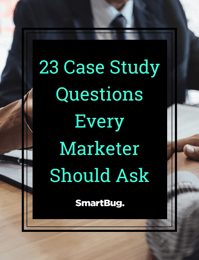
By Ryan Malone
One of the most important ingredients in a case study is the headline.
When you are trying to generate inbound marketing leads from case study content, the headline is the first thing potential readers see.
It takes a matter of seconds for the potential reader to consider a headline, and decide whether or not they want to read your case study. The headline needs to be compelling and relevant to capture the reader in those vital seconds.
A good case study headline answers the common questions that go through every reader’s mind:
- What will I learn?
- Is it worth my time to read this case study?
- What’s in it for me?
- Is this case study written for people like me?
Below are 15 case study headlines that identify an ideal reader or targeted topic and say what the readaer will learn. Substitute in any product or service and ideal reader, to make these catchy headlines work for your business.
Add a colon, with the words “A Case Study,” or use a sub headline to let readers know its a case study format. Many of these headlines can also be repurposed for blog posts, white papers and articles too.
15 Powerful Case Study Headlines
- IT Executive Shares Secrets to Mobile Application Development Success
- How IT Managers Can Increase Conversions by 50 Percent with Personalized Landing Pages
- The Secrets of A Successful Lead Nurturing Strategy for Sales Managers
- Leveraging Educational Content: What Online Marketers Need to Know
- E-Commerce Retailer Generates 500% ROI Using Facebook Targeted Ad Campaign
- Fortune 500 Executive Uses Project Management Software to Increase Employee Productivity by 20%
- How Small Companies Can Double Sales with E-mail Trigger Campaigns
- Lessons from a Brand Manager: How to Build Loyalty using Twitter
- How to Optimize Your Logistics Program without Breaking the Bank
- Testing into Social Media Results In 1000% ROI for Chain Store
- Publisher Generates New Revenue Stream With Webinar Hosting
- 3 Steps for Marketers to Build Brand Loyalty through Social Media
- Using Video to Create Traffic and Conversions: A Guide for E-Marketers
- 10 Recession-Proof Tips for Generating Online Holiday Sales
- How Point-of-Sale Promotions Improved a Restaurateur’s Bottom Line
Do you devote enough thought to writing powerful case study headlines? The next time you post a blog or any other content, be sure the headline directly addresses your ideal reader and what they’ll takeaway from reading your content.

About the author
Ryan Malone is the founder and Chairman of the Board of SmartBug Media and is a veteran of Deloitte & Touche, Seagate and several venture-backed technology companies. When he's not leading SmartBug and helping clients build high-octane marketing organizations, he's loving his wife and daughters and unsuccessfully learning the guitar. Go Terps! Read more articles by Ryan Malone.










